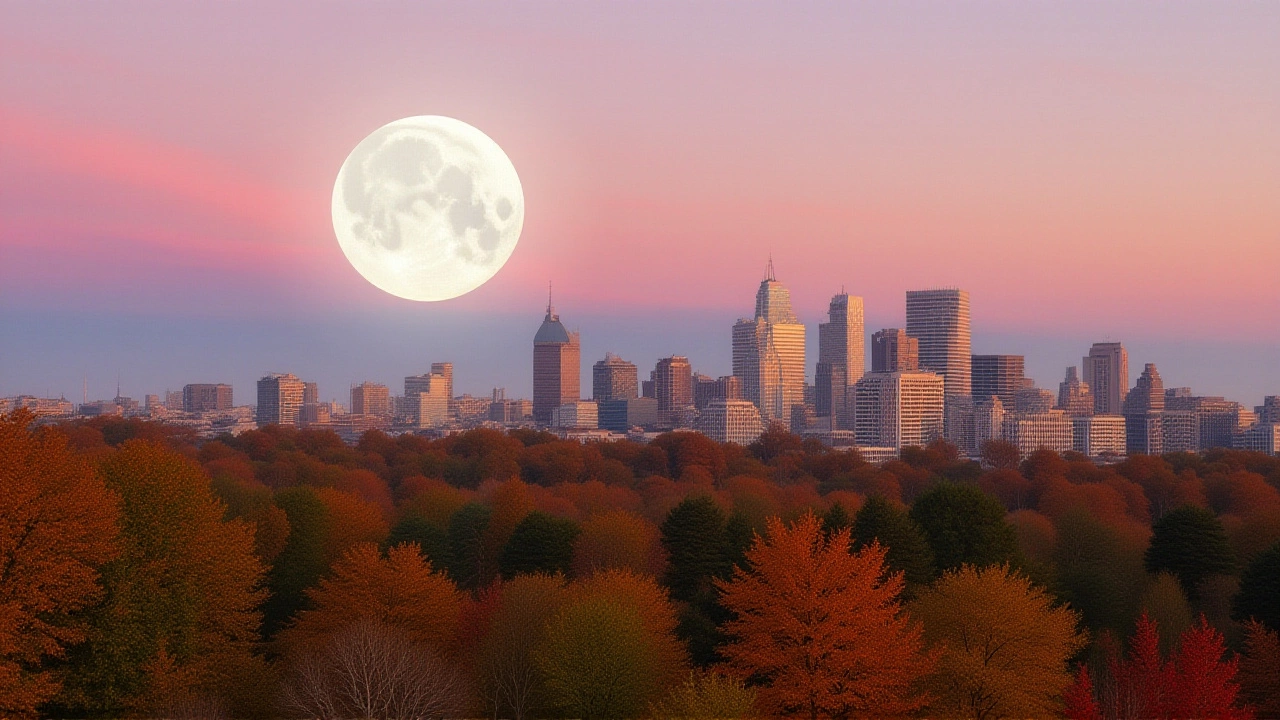Supermoon: The Full Moon That Lights Up the Night Sky
When you hear Supermoon, a full moon that looks bigger and brighter because it’s at its closest point to Earth. It’s also called a big moon. In the same breath, many people also notice the lunar eclipse, the moment Earth’s shadow falls on the moon or feel stronger tides, the rise and fall of sea levels driven by the moon’s pull. If you love snapping the night sky, sky photography, capturing celestial events with a camera becomes a natural extension of watching a supermoon. All these pieces fit together: the supermoon amplifies lunar brightness, which can make a concurrent eclipse more dramatic, while the extra gravitational pull can lead to noticeably higher tides, and the clear, bright night provides perfect conditions for photographers.
Why the Supermoon Captivates Us
First off, the supermoon’s size difference may seem small—about 14% larger—but our eyes perceive it as much bigger because of the contrast with the dark sky. This visual impact triggers curiosity and a sense of awe, prompting people to gather outside, share pictures, and discuss the event on social media. The phenomenon also ties into cultural stories; many societies link a big, bright moon with good luck or significant change. From an astronomical standpoint, the supermoon is a reminder that the moon’s orbit isn’t a perfect circle, which is why its distance changes and why we get these occasional spectacles.
Beyond the visual wow factor, a supermoon can affect the Earth in subtle ways. The increased gravitational force can raise high tides by a few inches, a phenomenon known as “perigean tides.” In coastal towns, these higher tides sometimes expose hidden beaches or create stronger currents that boaters need to watch. While the effect isn’t enough to cause flooding on its own, it’s a good reminder of the moon’s constant pull on our planet—even when we don’t feel it.
For sky photographers, the supermoon is a golden opportunity. The extra illumination means shorter exposure times, less noise, and the chance to capture fine surface details like craters and maria. Pairing a sturdy tripod with a telephoto lens and a remote shutter release can yield crisp images that showcase the moon’s texture. Many photographers also like to frame the supermoon against familiar landmarks—think city skylines or mountain ranges—to give a sense of scale and context. The key is to shoot when the moon is high in the sky to avoid atmospheric distortion.
When a supermoon coincides with a lunar eclipse, the result is a “blood moon” that looks both eerie and beautiful. The Earth’s shadow filters out blue light, leaving a reddish hue that stands out against the night. This rare combo attracts both casual observers and serious astronomers because it blends two distinct lunar events into one. The eclipse phase also adds a dynamic element for photographers, who can capture the progression from bright to dark and back again.
Even if you’re not into photography, there are simple ways to enjoy a supermoon. Find a spot with a clear view of the horizon, turn off bright lights, and let your eyes adjust for about 20 minutes. You’ll notice the moon’s color, its surface details, and the way it glows against the dark. If you live near a body of water, watch how the moon’s reflection dances on the surface—this is the tidal effect in action, turning a simple night walk into a reflective experience.
Educators also use supermoons as teaching moments. They can illustrate orbital mechanics, explain why the moon’s phases change, and discuss how gravitational forces shape tides. By linking a real‑world event to classroom concepts, teachers make abstract ideas concrete. Students can even calculate the distance difference between a regular full moon and a supermoon, reinforcing math skills while sparking curiosity about space.
Scientists keep a close eye on supermoons too. By measuring the exact brightness and size, they can refine models of the moon’s orbit and its interaction with Earth’s gravity. These data points help improve predictions for future supermoons and related tidal events, which can be valuable for coastal planning and navigation.
In short, the supermoon is more than a pretty picture in the sky. It bridges astronomy, geography, photography, culture, and education, offering something for everyone. Whether you’re tracking tide charts, setting up a camera tripod, or just standing on a balcony to soak in the glow, the supermoon invites you to look up and notice the subtle forces that shape our world.
Below you’ll find a collection of articles that dive deeper into each of these angles— from the science behind lunar tides to step‑by‑step guides for capturing the perfect supermoon shot. Explore the range, pick what interests you, and get ready to experience the next big lunar event with fresh insight.
